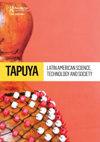文明木乃伊:考古收藏技术人员的冒险
IF 1.2
Q2 HISTORY & PHILOSOPHY OF SCIENCE
Tapuya: Latin American Science, Technology and Society
Pub Date : 2022-07-12
DOI:10.1080/25729861.2022.2068332
引用次数: 0
摘要
在这篇文章中,我跟随智利一所大学的技术人员组织收集木乃伊材料的工作。在此过程中,我将实验室研究的一些观点转化为另一种背景:考古收藏品的沉积。通过跟踪技术人员如何整理藏品,并探索他们在通过实践经验获得知识的过程中所扮演的角色,我用一种“怀特海德式的扭曲”来揭示保护实践在考古学中是如何受到关注的。只要木乃伊被作为“物质遗产”保存下来,并作为“文明的载体”在公众面前被见证,这些“过去的使者”就会被他们的历史所困扰。但在技术人员的手中,我推测,木乃伊材料成为考古对象,充满了一种特殊的存在方式。通过他们的工作,他们了解了木乃伊的生活史,在这样的故事中,我关注的是一种永恒的感觉,这是考古收藏保护的理想目的。我用怀特黑德的文明概念来分析这一点,以强调保护过程如何旨在获得永恒的东西。在这个意义上,我提出了文明作为收集和保存事物的诱饵的观点。本文章由计算机程序翻译,如有差异,请以英文原文为准。
Civilizing mummies: an adventure of technicians in archaeological collections
ABSTRACT In this article, I follow the work of technicians organizing a collection of mummified materials in a university of Chile. In doing this, I translate some points of laboratory studies into another context: a deposit of archaeological collections. By following how technicians sort out the collections and exploring their roles in the making of knowledges tinged by hands-on experience, I unravel with a “Whiteheadean twist” how conservation practices are a matter of concern in archaeology. Insofar the mummies are preserved as “material heritages” and witnessed in public as “carriers of civilization,” these “ambassadors of the past” are haunted in turn by their histories. But in the hands of technicians, I speculate that mummified materials become archeological objects imbued with a particular mode of existence. Through their work, they get to know the life-histories of mummies and in such stories, I focus on a sense of permanence, felt as an ideal purpose of conservation in archaeological collections. I analyze this with Whitehead’s notion of civilization to underscore how conservation processes aim at attaining everlasting things. In this sense, I develop the point that civilizations function as lures for collecting and preserving things.
求助全文
通过发布文献求助,成功后即可免费获取论文全文。
去求助
来源期刊

Tapuya: Latin American Science, Technology and Society
Social Sciences-Social Sciences (all)
CiteScore
1.60
自引率
0.00%
发文量
39
审稿时长
19 weeks
 求助内容:
求助内容: 应助结果提醒方式:
应助结果提醒方式:


